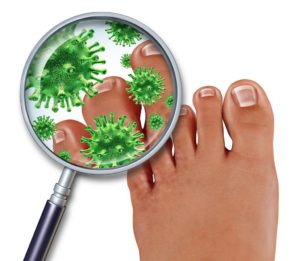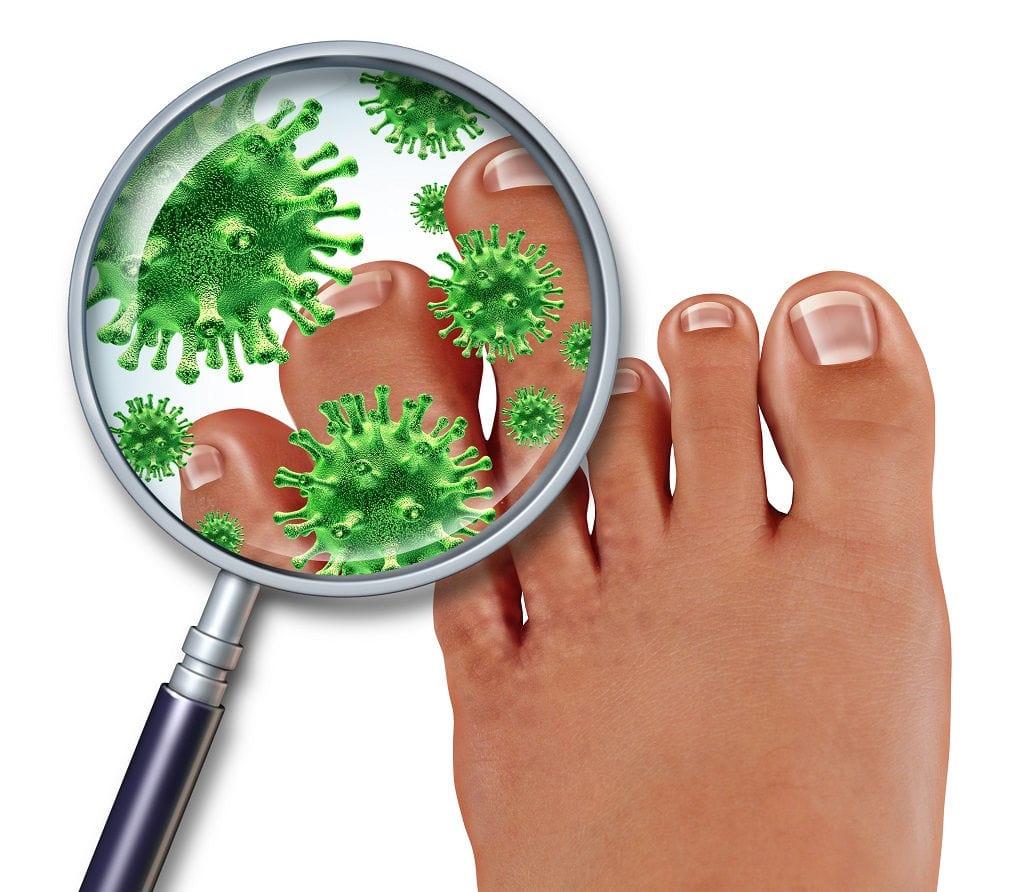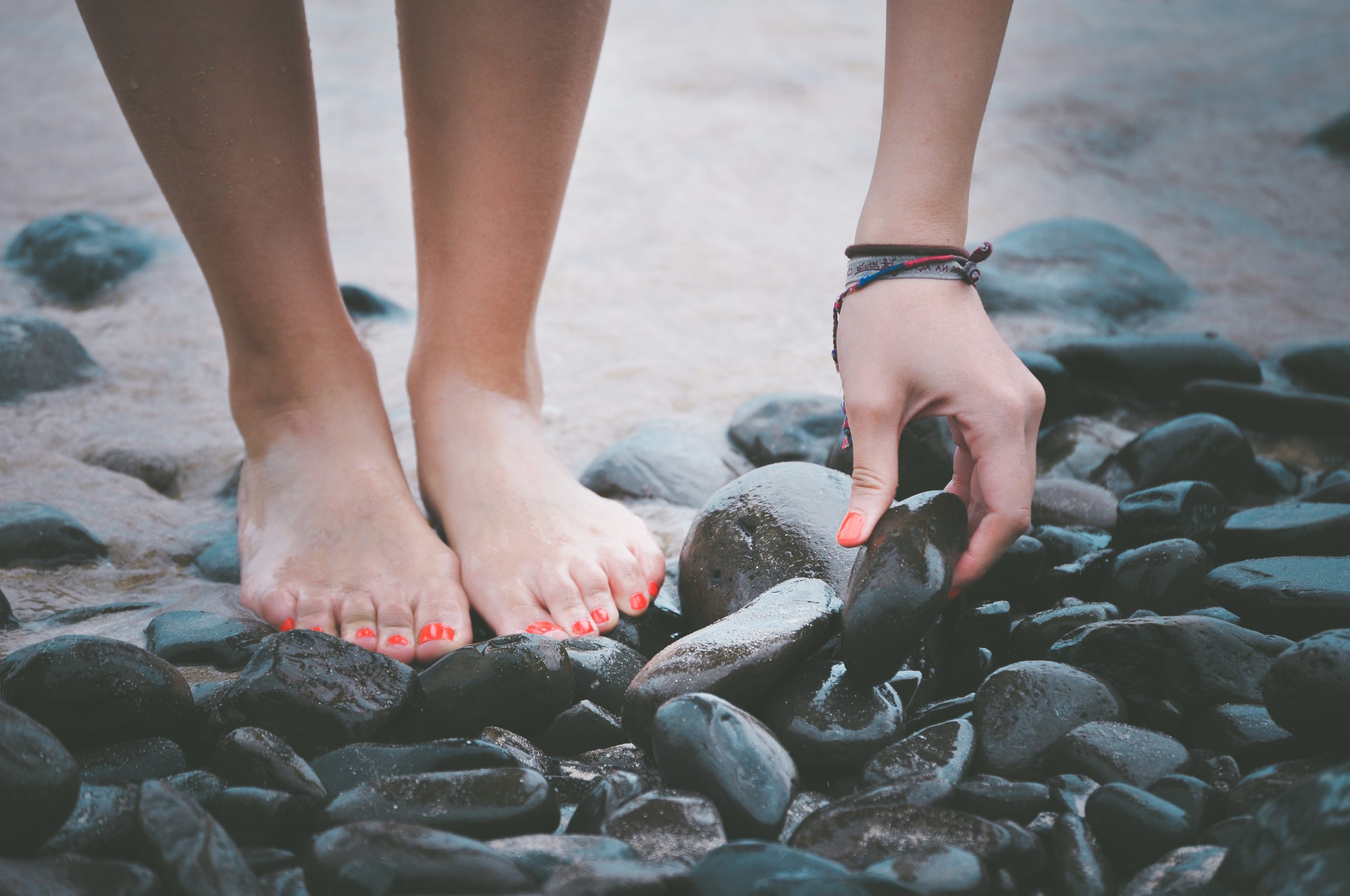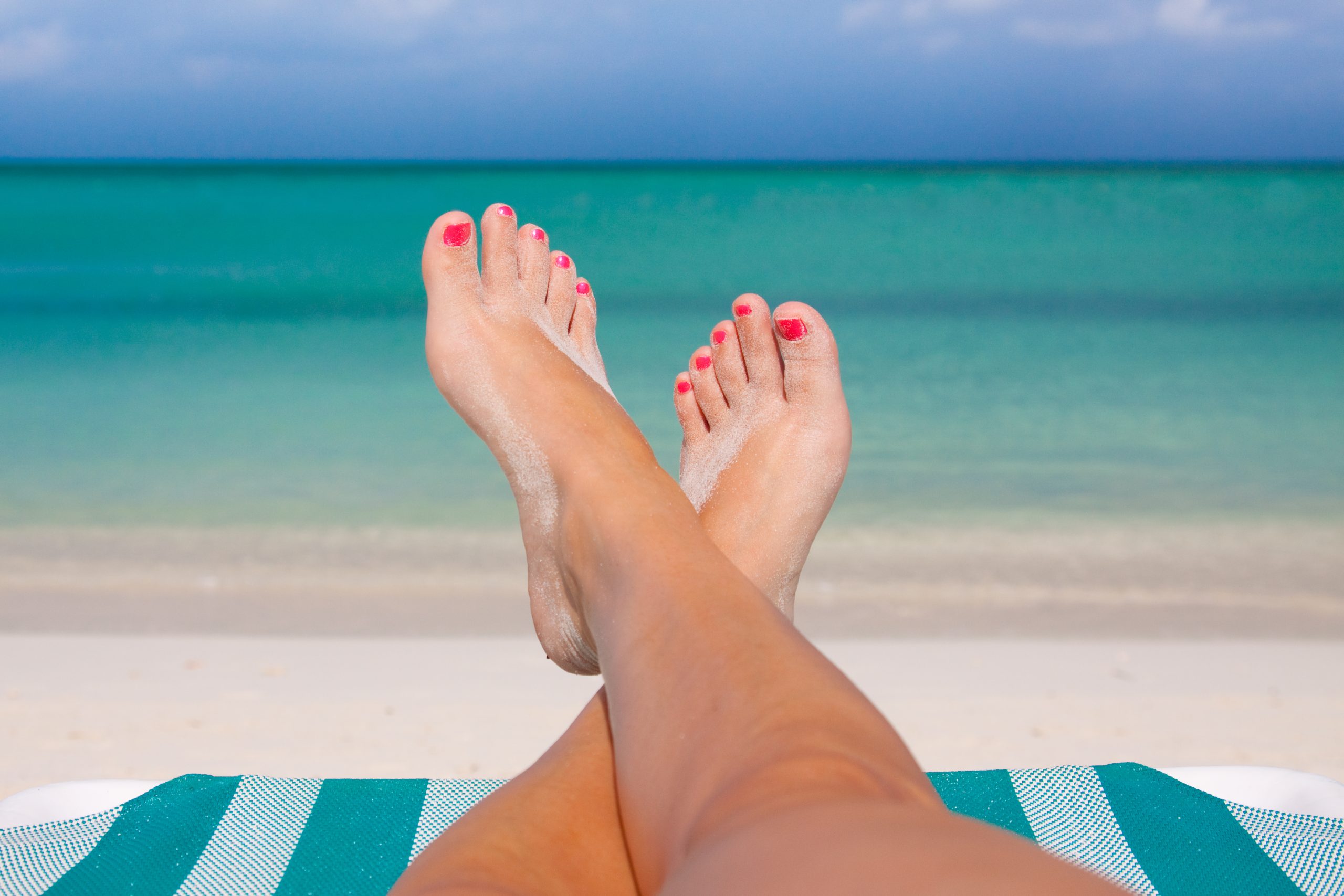
Tinea pedis, more commonly known as athletes’ foot, is caused by fungus. It is one of the most common skin conditions of the foot and can be very infuriating. It can present with severe itching, burning or stinging sensations. This same fungus can also cause jock itch or ringworm. The affected areas include the bottom of the foot more than on the top of the foot, and often can be present in between the toes. If it is seen on the skin, then there’s a good chance it may also be on the nails – which can result in yellow, discolored nails. Sometimes, the nails are brittle or thickened and can cause a lot of pain if they become too deformed. This condition is called onychomycosis.
So, what causes fungus?
The environment that fungus prefers and thrives in is a warm, dark moist place – typically, it is common for our feet to be in this environment as we may spend a lot of time wearing shoes. This can be contagious, so it’s important to know that you can get fungus either from dirty showers or maybe public pools. It’s a good idea to wear sandals in areas like this.
If your immune system is affected by other medical problems, such as diabetes or an auto-immune disease, you may be more susceptible to fungus because your body cannot fight off the fungus.
What are some things that you can do?
- Take your shoes off. Since fungus likes a warm, moist place; it may be a good idea to take your shoes and socks off as soon as you get home. Walking barefoot at home will allow the feet to breathe.
- Change your shoes on a regular basis, possibly alternating every other day. You may also want to spray your shoes with an anti-fungal spray before use.
- When you wash your clothes, make sure your socks are washed in water that’s over 140 degrees as this will also help destroy the fungus that may be in your socks.
- Make sure you wear socks that breathe. Socks that have rayon in them are thought to pick up moisture best.
- Keep your feet clean. It’s important to reach down while showering and clean your feet.
- Avoid contact with surfaces in public areas that might have fungus on them.
- You may also try tea tree oil. Studies have shown that tea tree oil may be effective.
- Another home remedy is to use a foot soak with tea. Try soaking your feet in a half gallon of water with three or four teabags. This is especially important if your feet perspire excessively. Tea has tannic acid in it which is a good drying agent, and the soaking will dry up your sweat ducts. Doing this for 15 minutes, three times a week in combination with an over-the-counter antifungal cream works wonders.
- Consider purchasing over-the-counter products. When you’re using these, it’s important that you use them for up to one month. If after three weeks, you find that they’re not helping, you may need to switch to another type of medication and seek medical attention from a specialist to make sure that you’re dealing with an athlete’s foot properly.It takes four to five weeks for your skin to become all new skin. So, it makes sense that you should use these for that length of time to see if they help. These over-the-counter products include.
-
- Micatin
- Lotrimin
- And Tinatin
It is recommended that you apply these creams to the affected area of your feet twice a day.
Oral medication is also an option. The most popular medication for this is called Lamisil. Lamisil, although it can be highly effective – it has to be taken carefully and usually doctors will do a liver panel beforehand to make sure that your liver is healthy, as this can have a negative effect on your liver.
So, if you’re finding yourself with burning, itchy feet and a rash, make sure that you seek medical attention immediately. In many cases, the visits to the doctor can be avoided with a little bit better education as to what to do on your own. We hope these tips help you with athlete’s foot, however, Anderson Podiatry Center is just a call away when you need to attend to you foot and ankle needs. Our clinics are conveniently located in Fort Collins and Broomfield and are the only full-service foot care center in the tri-state area of Colorado, Nebraska, and Wyoming.



